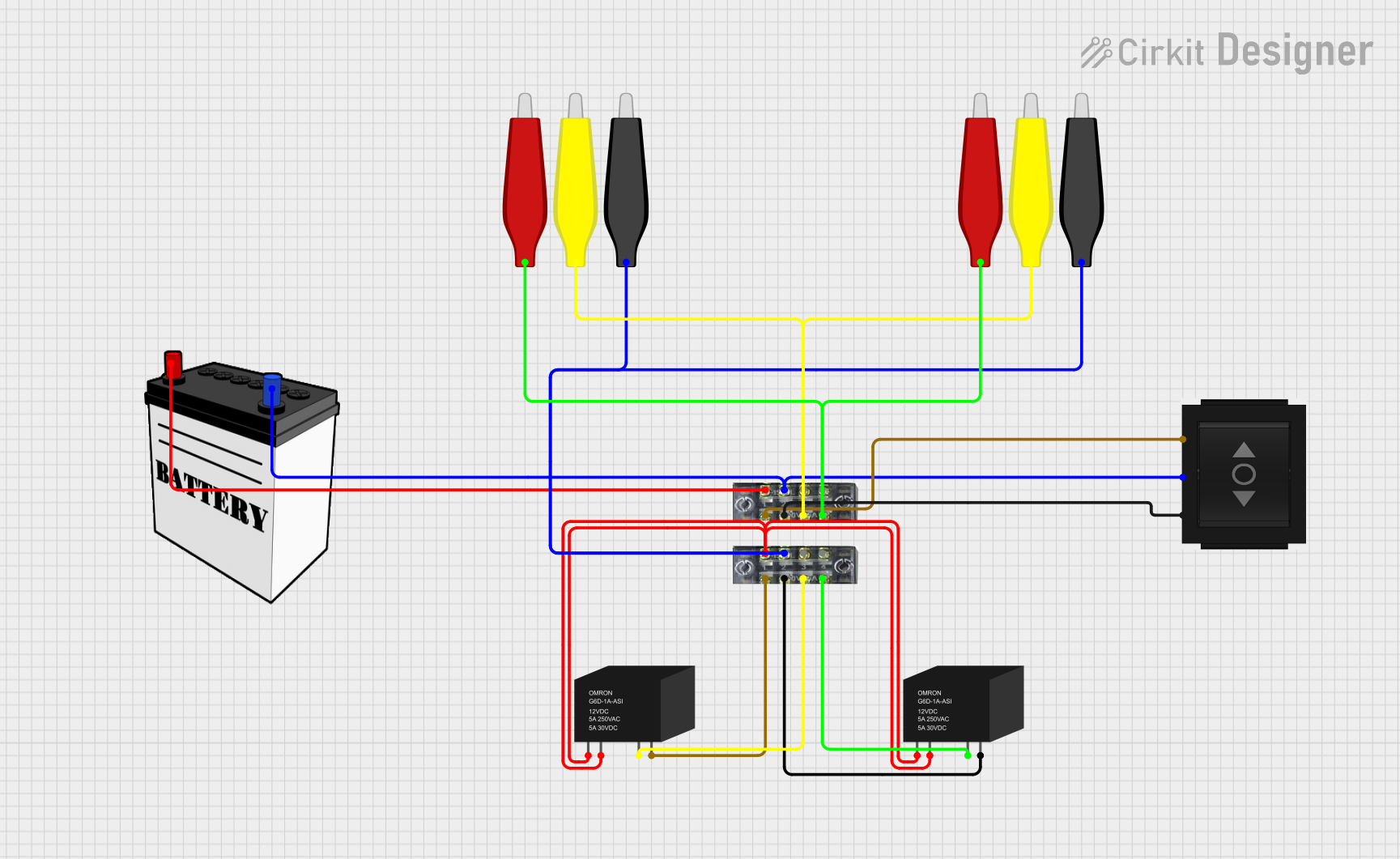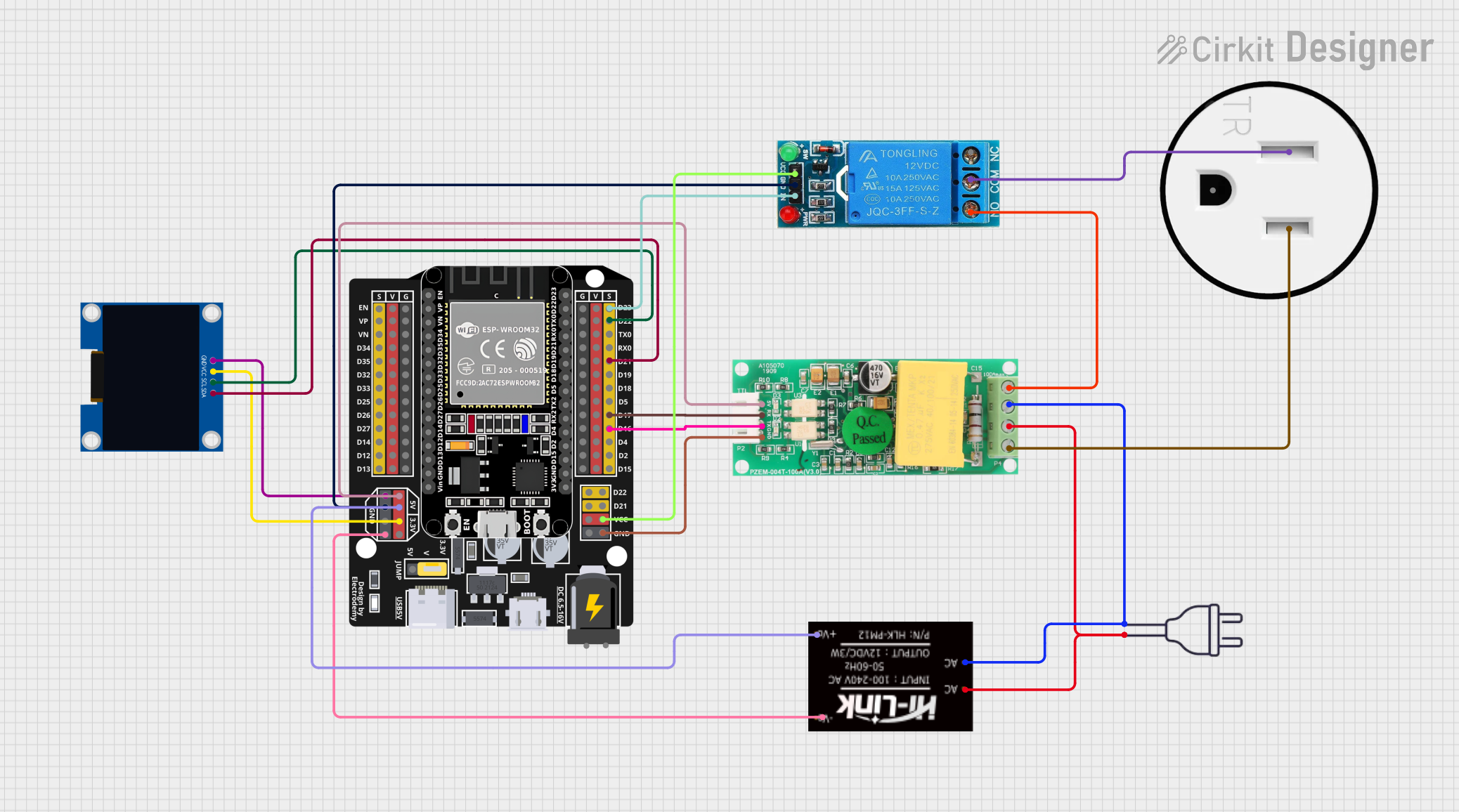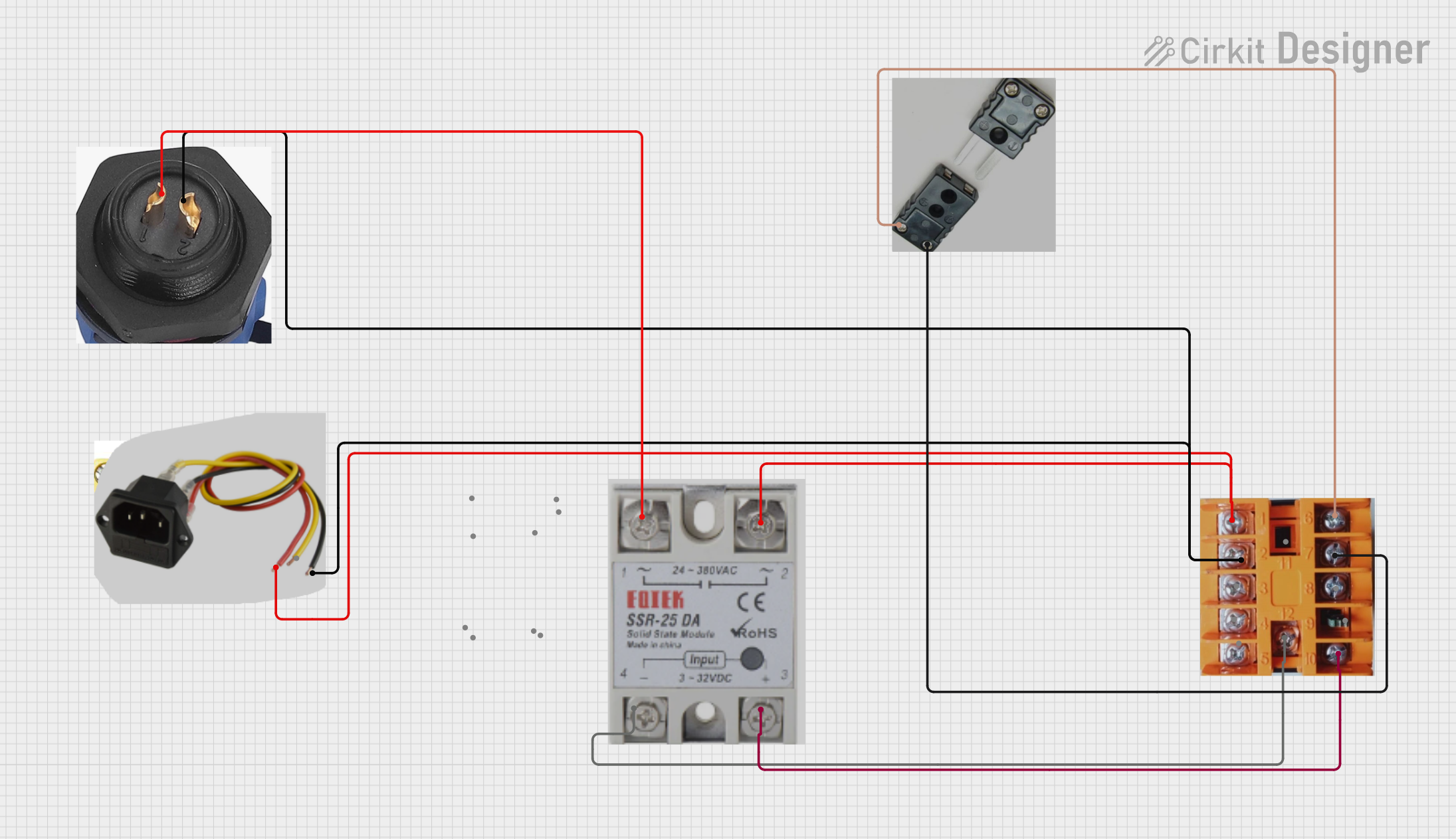
How to Use ELG-150-12DA: Examples, Pinouts, and Specs

 Design with ELG-150-12DA in Cirkit Designer
Design with ELG-150-12DA in Cirkit DesignerIntroduction
The ELG-150-12DA is a 150W LED driver designed to provide a stable 12V DC output for powering LED lighting systems. This high-performance driver is known for its compact design, high efficiency, and robust build quality. It is suitable for both indoor and outdoor applications, thanks to its IP67-rated enclosure and comprehensive protection features, including over-voltage, over-current, and short-circuit safeguards.
Explore Projects Built with ELG-150-12DA

 Open Project in Cirkit Designer
Open Project in Cirkit Designer
 Open Project in Cirkit Designer
Open Project in Cirkit Designer
 Open Project in Cirkit Designer
Open Project in Cirkit Designer
 Open Project in Cirkit Designer
Open Project in Cirkit DesignerExplore Projects Built with ELG-150-12DA

 Open Project in Cirkit Designer
Open Project in Cirkit Designer
 Open Project in Cirkit Designer
Open Project in Cirkit Designer
 Open Project in Cirkit Designer
Open Project in Cirkit Designer
 Open Project in Cirkit Designer
Open Project in Cirkit DesignerCommon Applications and Use Cases
- LED strip lighting for residential and commercial spaces
- Outdoor LED lighting systems, such as streetlights and signage
- Industrial lighting applications requiring high reliability
- Architectural lighting installations
- Any 12V DC-powered LED system requiring a constant voltage source
Technical Specifications
The ELG-150-12DA is engineered to meet the demands of modern LED lighting systems. Below are its key technical specifications:
| Parameter | Value |
|---|---|
| Output Voltage | 12V DC |
| Output Current | 0–12.5A |
| Output Power | 150W |
| Input Voltage Range | 100–305V AC |
| Efficiency | Up to 91% |
| Power Factor | ≥ 0.95 (at full load, 230V AC) |
| Operating Temperature | -40°C to +85°C (case temperature) |
| Enclosure Rating | IP67 (dust-tight and waterproof) |
| Dimming Control | 3-in-1 dimming (0–10V, PWM, Resistor) |
| Protections | Over-voltage, over-current, short-circuit |
| Dimensions | 220mm x 68mm x 38.8mm |
| Weight | 0.9 kg |
Pin Configuration and Descriptions
The ELG-150-12DA has input and output wiring for AC and DC connections, as well as dimming control. Below is the pin configuration:
Input and Output Connections
| Wire Color | Function | Description |
|---|---|---|
| Black | AC Line (L) | Connect to the live wire of the AC input |
| White | AC Neutral (N) | Connect to the neutral wire of the AC input |
| Green/Yellow | Ground (GND) | Connect to earth ground for safety |
| Red | DC Positive (+V) | Positive output for LED load |
| Black | DC Negative (-V) | Negative output for LED load |
Dimming Control Wires
| Wire Color | Function | Description |
|---|---|---|
| Blue | DIM- | Negative terminal for dimming control |
| White | DIM+ | Positive terminal for dimming control |
Usage Instructions
How to Use the ELG-150-12DA in a Circuit
- Input Connection: Connect the black (AC Line) and white (AC Neutral) wires to the AC power source. Ensure the input voltage is within the range of 100–305V AC.
- Output Connection: Connect the red (DC Positive) and black (DC Negative) wires to the LED load. Ensure the total load does not exceed 150W.
- Dimming Control (Optional):
- For 0–10V dimming, connect a 0–10V dimmer to the DIM+ (white) and DIM- (blue) wires.
- For PWM dimming, connect a PWM signal (frequency: 100–3kHz) to the DIM+ and DIM- wires.
- For resistive dimming, connect a variable resistor (100kΩ max) between DIM+ and DIM-.
- Grounding: Connect the green/yellow wire to earth ground for safety.
Important Considerations and Best Practices
- Load Matching: Ensure the total power of the connected LED load does not exceed 150W to avoid overloading the driver.
- Ventilation: Install the driver in a well-ventilated area to prevent overheating.
- Waterproofing: For outdoor use, ensure all connections are properly sealed to maintain the IP67 rating.
- Dimming Compatibility: Verify that the dimming control method (0–10V, PWM, or resistor) is compatible with your dimmer or control system.
- Polarity: Double-check the polarity of the DC output connections to avoid damaging the LED load.
Example: Connecting to an Arduino UNO for PWM Dimming
The ELG-150-12DA can be dimmed using a PWM signal from an Arduino UNO. Below is an example setup and code:
Circuit Setup
- Connect the Arduino's GND pin to the DIM- (blue) wire of the driver.
- Connect a PWM-capable pin (e.g., pin 9) of the Arduino to the DIM+ (white) wire of the driver.
- Ensure the Arduino and the driver share a common ground.
Arduino Code
// Example code to control the ELG-150-12DA using PWM from an Arduino UNO
const int pwmPin = 9; // PWM-capable pin connected to DIM+ of the driver
void setup() {
pinMode(pwmPin, OUTPUT); // Set the PWM pin as an output
}
void loop() {
// Gradually increase brightness
for (int brightness = 0; brightness <= 255; brightness++) {
analogWrite(pwmPin, brightness); // Write PWM signal to DIM+
delay(10); // Small delay for smooth dimming
}
// Gradually decrease brightness
for (int brightness = 255; brightness >= 0; brightness--) {
analogWrite(pwmPin, brightness); // Write PWM signal to DIM+
delay(10); // Small delay for smooth dimming
}
}
Troubleshooting and FAQs
Common Issues and Solutions
No Output Voltage
- Cause: Incorrect AC input wiring or no AC power.
- Solution: Verify the AC input connections and ensure the power source is active.
LEDs Flicker
- Cause: Incompatible dimming signal or unstable input voltage.
- Solution: Check the dimming control signal and ensure it matches the driver's specifications. Verify the input voltage is stable.
Driver Overheats
- Cause: Insufficient ventilation or excessive load.
- Solution: Ensure the driver is installed in a well-ventilated area and the load does not exceed 150W.
Dimming Does Not Work
- Cause: Incorrect dimming connections or incompatible dimmer.
- Solution: Verify the dimming wires are correctly connected and the dimmer is compatible with the driver's dimming methods.
FAQs
Can I use the ELG-150-12DA with a 24V LED load?
- No, the driver is designed for 12V LED loads only. Using a 24V load may damage the LEDs or the driver.
Is the driver suitable for outdoor use?
- Yes, the IP67 rating ensures the driver is dust-tight and waterproof, making it suitable for outdoor applications.
What happens if the load exceeds 150W?
- The driver includes over-current protection and will shut down to prevent damage. Reduce the load to within the specified limit.
Can I use a microcontroller other than Arduino for dimming?
- Yes, any microcontroller capable of generating a 0–10V, PWM, or resistive dimming signal can be used. Ensure compatibility with the driver's dimming specifications.